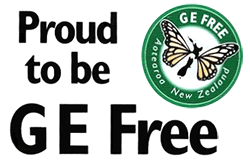There are concerns that New Zealand Food Regulator Food Standards Australia New Zealand (FSANZ) is being manipulated by a Chemical Company to gain US government approval for new GE crops designed to survive its proprietary herbicide 2,4-D.
Applications have recently been made in the US that seek to exploit the Food Standards Australia NZ (FSANZ) approval for importation of 2,4-D GM corn and soy that was made late 2011, despite appeals to the Minister against approval on safety grounds.
It appears the FSANZ rubber-stamping of new 2,4-D crops for importation without any independent testing or maximum residue level, will be used to justify growing the 2,4-D crops in the US, against public opposition and scientific concern.(2)
"New Zealand risks being used a 'patsy' in a smoke and mirrors game," said Jon Carapiet, spokesman for GE-Free NZ in food and environment.
"Officials in the US will be told New Zealand and Australia have approved 2,4-D food crops so they must be safe, even though FSANZ have conducted absolutely no safety testing themselves."
"Minister Kate Wilkinson rejected our appeal against the FSANZ approval, and in doing so she may have been a pawn in a game aimed as justifying approval of a new level of toxicity in our food," said Claire Bleakley, president of GE-free NZ in food and environment.
"The Food Standards Australia New Zealand Authority (FSANZ) approval of the genetically engineered 2,4-D-resistant foods totally over-rode the concerns of the submitters ignoring the increased level of toxic chemicals in GE foods and the impacts on human and animal health."
It is concerning that these events were approved during the election when New Zealand in effect did not have a Food Safety Minister to focus on the serious gaps in the applications.
It is only now that the US has received an application to consider the commercialization of the Dow Chemical company genetically engineered corn and soy due to the serious weed resistance problems that the original Monsanto RoundUp Ready GM corn and GM soy have had, after only ten years of commercialization.
The chemical 2,4-D has 22 different formulations since it came off patent, some contain toxic by products like dioxins. It is not known what the recommended maximum residue level (MRL) has been set at.
“The trans Tasman body FSANZ, rubber stamped the toxic chemical- laden foods with no recognised safety tests. Yet there are serious health impacts from the spray itself, which was not designed for the food crops, let alone the disruption to the plant DNA from the foreign genes that were engineered into the crop.” says Claire Bleakley.
ENDS:
Jon Carapiet 0210507681
Claire Bleakley 06 3089842 / 027 348 6731
References:
(1) http://www.foodstandards.gov.au/consumerinformation/gmfoods/gmcurrentapplication1030.cfm
(2) http://action.panna.org/p/dia/action/public/?action_KEY=9109
(3) http://www.regulations.gov/#!documentDetail;D=APHIS-2010-0103-0001 |


